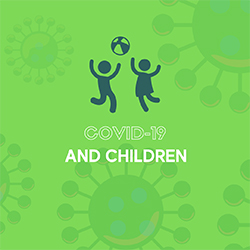COVID-19 and Children

As the COVID-19 pandemic continues to impact people across the globe, different groups experience the virus and related restrictions differently. Children and adolescents face specific challenges based on their phase of life and how both the COVID-19 disease and measures designed to contain the disease impact them.
Children and adolescents are generally at low risk of infection, and if they become infected it is likely to be mild. However, some children and young people have had severe experiences with the disease, and a few have died.
Disproportionate impact on children’s health and well-being
Children and adolescents of all ages and in all countries are seriously suffering from the consequences of the pandemic. COVID-19-related measures are having a profound effect on their health and well-being and for some the impact will be lifelong.
For example, COVID-19 has created the largest disruption of education systems in history, affecting nearly 1.6 billion students in more than 190 countries.
In addition, according to the WHO Pulse survey on continuity of essential health services during the COVID-19 pandemic, published in August 2020, 90% of countries report disruptions to essential health services since the COVID-19 pandemic started. The most frequently disrupted areas reported include services essential for children, such as routine immunization – including 70% of outreach services and 61% of facility-based services.
The harmful effects of the pandemic have not been distributed equally. Children living in vulnerable situations continue to be disproportionately affected in relation to their long-term health outcomes.
Children at the top of WHO/Europe agenda
WHO/Europe continues to show its commitment to children and adolescents and to leaving no one behind as the world continues to grapple with COVID-19. Three areas of work are particularly important to ensure that children access health and social services according to their needs:



